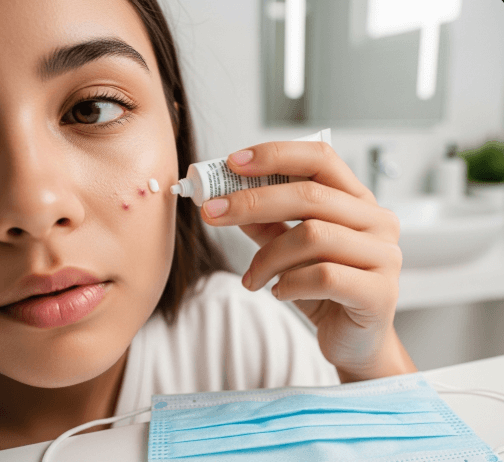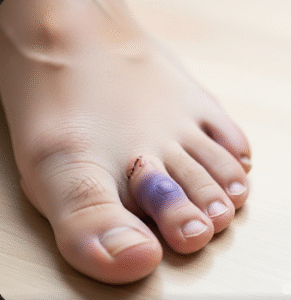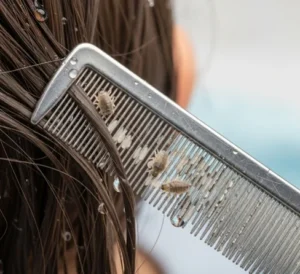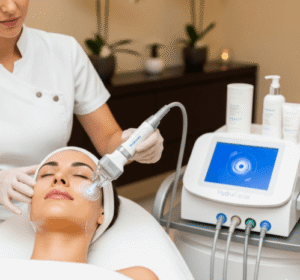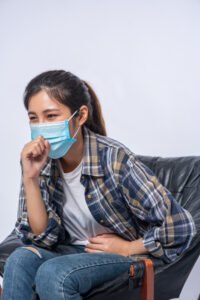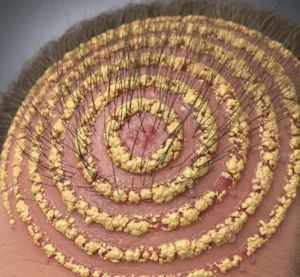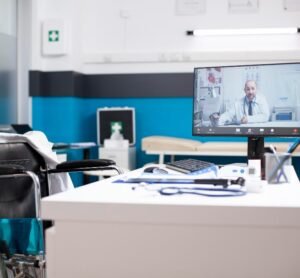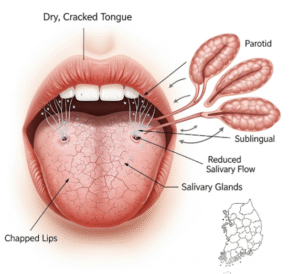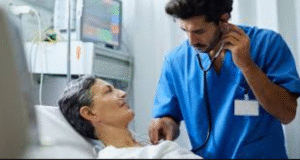Effective Care for Acne Caused by Prolonged Mask Wearing
What it is
Maskne is a term used to describe acne that develops from frequent or prolonged use of face masks. It combines two issues — mechanical irritation from the mask rubbing against the skin and the buildup of heat, sweat, and bacteria in the covered area.
→ Maskne typically appears as pimples, blackheads, whiteheads, or even rashes around the cheeks, chin, and jawline.
➝ It has become especially common since the COVID-19 pandemic, but many people in Korea still experience it due to mask-wearing in crowded environments, pollution, or sensitive skin.
➔ Maskne management involves preventive measures, daily skincare adjustments, and professional dermatology support to keep skin clear and healthy despite mask use.
Why it’s done
Maskne management is essential because untreated mask-related acne can lead to long-term problems.
- Skin irritation ⇒ Friction and humidity inside the mask aggravate sensitive skin.
- Bacterial growth ⇒ Trapped sweat and oil create the perfect environment for acne-causing bacteria.
- Clogged pores ➳ Makeup, sunscreen, and dirt trapped under the mask increase breakouts.
- Confidence issues ➟ Acne on the lower face can cause self-consciousness, especially in teens and working professionals.
- Prevention of scarring ⇒ Proper management reduces the risk of dark spots and acne scars developing later.
The goal is to control acne while allowing safe mask use for health protection.
Alternatives
If specialized maskne clinics are not accessible, alternatives include:
→ Gentle cleansing routines: Wash face twice daily with mild foaming cleansers.
➝ Use of mineral sunscreens: Lightweight, non-comedogenic products that don’t clog pores.
➔ Breathable masks: Using cotton masks indoors or choosing surgical masks that reduce friction.
⇒ Lifestyle adjustments: Take short mask breaks when safe ; avoid heavy makeup under masks.
➟ Over-the-counter care: Benzoyl peroxide spot treatments or salicylic acid toners (in safe concentrations).
Preparation
Before starting maskne treatment, patients should prepare in simple ways.
➳ Review skincare products: Heavy creams ; pore-clogging sunscreens ; and occlusive makeup should be discontinued.
➝ Wash reusable masks properly: Detergent buildup and dirt can worsen acne.
→ Note acne patterns: Keep track of whether breakouts happen only with masks or are related to hormones/diet too.
➟ Consult a dermatologist: Professional diagnosis helps distinguish between acne, dermatitis, and rosacea, which can appear similar under masks.
➔ Set realistic expectations: Maskne can improve within weeks with proper care but may require consistent long-term adjustments.
How it’s Done
Maskne management involves daily preventive skincare and professional dermatology treatments.
Daily Home Routine
→ Gentle Cleansing: Wash face morning and night with a mild, pH-balanced cleanser.
➝ Lightweight Moisturizer: Gel or lotion textures with hyaluronic acid, ceramides, or panthenol help protect the skin barrier.
➔ Non-Comedogenic Sunscreen: Choose mineral-based sunscreen with zinc oxide or titanium dioxide to avoid pore blockage.
⇒ Spot Treatments: Benzoyl peroxide or salicylic acid applied carefully on pimples.
➟ Makeup Adjustments: Skip heavy foundations under the mask ; use light BB creams or go makeup-free.
Clinic-Based Treatments in Korea
→ Hydration Therapy: Moisture facials strengthen the skin barrier and reduce irritation.
➝ Chemical Peels (low concentration): Salicylic or mandelic acid peels help unclog pores and reduce oil.
➔ LED Light Therapy: Blue light kills acne-causing bacteria ; red light calms inflammation.
➟ Oxygen Facials: Improve skin oxygenation, restoring brightness to dull and congested areas.
⇒ Topical Medications: Prescription creams with adapalene, clindamycin, or azelaic acid for persistent maskne.
Recovery
Recovery from maskne treatment is usually quick.
→ Mild redness after peels or facials resolves within a day.
➝ Results often appear within 4–6 weeks of consistent home and clinic care.
➔ Preventive measures, like choosing the right mask and keeping skin hydrated, are crucial for long-term control.
➟ If scars develop, additional treatments such as microneedling or fractional lasers may be recommended post-maskne phase.
Complication
Without proper management, maskne can cause:
→ Persistent breakouts: Acne may become chronic if triggers are ignored.
➝ Skin barrier damage: Overuse of harsh cleansers or scrubs can worsen irritation.
➔ Post-inflammatory hyperpigmentation (PIH): Dark spots remain after pimples heal.
⇒ Scarring: Deep cystic maskne can leave permanent scars.
➟ Psychological stress: Visible acne can affect work and social confidence.
Treatment option in Korea
South Korea is well-known for innovative acne care, and maskne treatments are widely available.
→ Dermatology Clinics: Clinics across Seoul, Busan, and Daegu specialize in acne caused by masks, offering peels, LED therapy, and hydration facials.
➝ K-Beauty Products: Brands like COSRX ; Some By Mi ; Dr. Jart+ ; and Innisfree produce non-comedogenic lines specifically targeting sensitive, acne-prone skin.
➔ Customized Acne Programs: Korean clinics often design combination plans — cleansing facials, LED therapy, and safe topical treatments.
➟ Hospital Partnerships: Some large hospitals integrate dermatology with respiratory care, acknowledging the link between mask use and skin irritation.
⇒ Preventive Education: Many Korean dermatologists emphasize teaching proper mask hygiene, daily routines, and product selection to reduce recurrence.

